Obama Comes to Alaska: We Have to Break the Ice, so We Can Save It.
As I drove, I imagined having to explain to a Secret Service agent that the reason my boots set off the sniffer dog is because the last two places I wore them were a pig farm and a gun show respectively. So, there was a perfectly good explanation why I smelled of gunpowder, and fertilizer. “No really! I swear! I still have the pictures on my phone!” I was glad I had allowed extra time.
I had allowed so much extra time, it turns out, that I was the first member of the press at Joint Base Elmendorf Richardson (JBER) and waited in my car for over an hour to be escorted in to see the landing of Air Force One. Eventually news vans, and cars filled with journalists and photographers pulled in and congregated in a huddle behind my car. I got out and received my White House press pool pass, but missed out on the cool Air Force lanyards which were all gone. The early bird got a stupid safety pin.
The convoy left at about 11:30 following a pilot car to a holding area filled with people in fatigues waiting to catch planes. We left our camera bags as instructed, to be sniffed by dogs as we ran everything else through the x-ray machine. My boots had made it through… at least so far. I helped myself to a pair of souvenir earplugs from the earplug dispenser on the wall to make up for my juvenile and crushing disappointment about the lanyard.
The bus that would take us to the tarmac approached, and I ran to grab my camera gear.
“Ma’am! Is this yours?” someone asked.
There were three men standing around my gear with their arms crossed and wires in various places.
“Oh crap,” said my inner voice, which immediately tried to think about what I might have done. Did I forget to take that baggie with the random ammo I found in my junk drawer out of my bag? Was there some kind of pocket knife, or lighter, or screwdriver? Or maybe something fell in my open backpack that wasn’t even mine! What if THAT happened? Or what if someone put something in there? What if I had set my bag down in a public place that had meth residue on it or something? Maybe the dog was just having a bad day? This is why they tell you to keep your things in sight at all times.
If I were a cartoon, you would have seen wiggly lines around my head, and a dozen thought bubbles of panic.
“Yes, those are mine. Is everything ok?”
“You need to turn on your laptop and cameras for us, ma’am.” My blood pressure began to sink back to a non life-threatening level.
I turned my devices on, and they did not explode, and I was on my way to the bus.
We unloaded on the tarmac by a large riser covered in sticky creosote. There was much consternation. Nobody liked that. The wind began to pick up, and there was a distinct arctic bite, despite the fact it was still August. Some people had brought hand warmers, and commented frequently how glad they were that they had brought hand warmers, and how good those hand warmers felt, and how they couldn’t imagine how much it would suck without hand warmers. I was not one of those people.
We had about an hour to wait, and I imagined some climate change denier in congress citing my numb fingers as proof that it’s all a hoax foisted on the American people by out-of-touch elitists who took chemistry in college.
(time passes)
Buses begin to arrive, spilling people on to the tarmac. They lined up behind barriers. Presumably those in the front row would get to shake hands with the President.
Then this thing drove by!
Two F-22s (I think that’s what they were) took off, one after the other, and made a dramatic steep turn, with their jets firing orange in the back. We all assumed they were leaving to escort Air Force One for the approach.
A black helicopter containing people with firearms did a couple laps around the airfield a few minutes later. A photographer with a bigger lens than me said he spotted snipers on buildings. Secret Service was everywhere. And then, we spotted it.
It was a beautiful day, and several journalists on the platform said they were glad Alaska was showing itself off for this historic visit. Because Alaskans likes good weather when visitors come.
Cheers erupted from the crowd as the wheels touched down. It was a nice landing, which you would expect I suppose, considering that there was probably a pretty good pilot operating that thing.
(Left) Brigadier Gen. Laurel J. Hummel, Adjutant General and Commissioner, Alaska Department of Military and Veterans’ Affairs.
(Center) Maj. Gen. Bryan R. Owens, Commanding General, U.S. Army Alaska/Deputy Commander, U.S. Alaskan Command, Joint Base Elmendorf-Richardson, Alaska.
(Right) Lt. Gen. Russell J. Handy, Commander, Alaskan Command, U.S. Northern Command; Commander, Eleventh Air Force, Pacific Air Forces; and Commander, Alaskan North American Aerospace Defense Region, North American Aerospace Defense Command, Joint Base Elmendorf-Richardson, Alaska.
These people must have the biggest business cards ever.
Alaska Governor Bill Walker, and President Obama exit the aircraft.
The presidential limo awaits. I wonder how they got that thing up here.
I think I ended up with the best spot on the platform.
Lt. Governor Byron Mallott, First Lady Donna Walker, and Governor Bill Walker watch as the President greets the VIPs.
And after a few minutes of handshakes, the departure.
Do not, I repeat, do NOT screw with the motorcade.
Twenty-three vehicles took of for the Dena’ina Center where the President would deliver the closing remarks at the GLACIER conference.
Rebecca Palsha from KTUU Channel 2 interviewed Senator Dan Sullivan, who was wearing boots. Cowboy boots. Brown cowboy boots with a black suit.
Another bus ride, and I was back at my car heading for the conference. There had been rumors there was going to be some kind of Tea Partyish protest telling the President to go home to Kenya, or that humans didn’t cause climate change so it wasn’t up to us to fix it, or why haven’t you done anything about the ISIS training camp in Unalakleet, or something. But I saw no signs of it – only a group of revelers on the Park Strip protesting Shell’s drilling in the arctic (which the President supports), and this crowd with a giant Save the Arctic sign.
I had time to visit a press briefing on Arctic Ocean stewardship with Ambassador David Balton, the Deputy Assistant Secretary for Oceans and Fisheries in the Bureau of Oceans and International Environmental and Scientific Affairs, U.S. Department of State. I learned a few fun facts.
If you define the arctic to mean north of the Bering Strait, the United States has limited capaciety currently to do any type of fisheries enforcement, but there is no commercial fishing we know of now in the high seas area north of the Bering Strait, anyway. That may change as sea ice melts and there is more open water and other countries see economic opportunity. Also, species that have never been in those waters may move north as waters warm. Even now, there are king crab washing up on the shores of Barrow, Alaska’s northernmost community. This has never happened in the memory of Barrow residents. We can also assume that cod, char, and salmon may start to appear in areas they have never been seen before.
Balton says that the US is going to have to join law of the sea treaty. As a non-party to the treaty, we are at a disadvantage. In order to have other countries recognize the outer limit of our continental shelf, the best way is to join the treaty. Our continental shelf area is 3-4 times the size of California. “That’s a lot of sea floor,” and a lot of oil. He also noted that our strained relationship with Russia does not extend to the sea and fisheries, and that we are able to work well with them despite tensions in other areas.
The whole time he was talking, the sniffer dog outside was going crazy. Either there was an entire Columbian drug cartel storming the conference center, or someone needed a walk and a treat.
And now, time for closing remarks by the President. Senator Lisa Murkowski, who has publicly wrung her hands saying that Obama is just “using Alaska” as a backdrop for the administration’s “climate agenda” was front and center, flanked by Governor Walker and Lt. Gov. Mallott. Senator Dan Sullivan was also in the house, but way back in the cheap seats. I could not see his footwear.
Secretary of State John Kerry introduced the President. The conclusion of his prepared remarks are below, with my highlights.
“So let me sum up. We know that human activity is changing the climate. That is beyond dispute. Everything else is politics if people are denying the facts of climate change. We can have a legitimate debate about how we are going to address this problem; we cannot deny the science. We also know the devastating consequences if the current trend lines continue. That is not deniable. And we are going to have to do some adaptation, and we are going to have to help communities be resilient, because of these trend lines we are not going to be able to stop on a dime. We’re not going to be able to stop tomorrow.
“But if those trend lines continue the way they are, there’s not going to be a nation on this Earth that’s not impacted negatively. People will suffer. Economies will suffer. Entire nations will find themselves under severe, severe problems. More drought; more floods; rising sea levels; greater migration; more refugees; more scarcity; more conflict.
“That’s one path we can take. The other path is to embrace the human ingenuity that can do something about it. This is within our power. This is a solvable problem if we start now.
“And we’re starting to see that enough consensus is being built internationally and within each of our own body politics that we may have the political will — finally — to get moving.
So the time to heed the critics and the cynics and the deniers is past. The time to plead ignorance is surely past. Those who want to ignore the science, they are increasingly alone. They’re on their own shrinking island.
[applause]
“And let’s remember, even beyond the climate benefits of pursuing cleaner energy sources and more resilient, energy-efficient ways of living, the byproduct of it is, is that we also make our air cleaner and safer for our children to breathe. We’re also making our economies more resilient to energy shocks on global markets. We’re also making our countries less reliant on unstable parts of the world. We are gradually powering a planet on its way to 9 billion humans in a more sustainable way.
These are good things. This is not simply a danger to be avoided; this is an opportunity to be seized. But we have to keep going. We’re making a difference, but we have to keep going. We are not moving fast enough.
“If we were to abandon our course of action, if we stop trying to build a clean-energy economy and reduce carbon pollution, if we do nothing to keep the glaciers from melting faster, and oceans from rising faster, and forests from burning faster, and storms from growing stronger, we will condemn our children to a planet beyond their capacity to repair: Submerged countries. Abandoned cities. Fields no longer growing. Indigenous peoples who can’t carry out traditions that stretch back millennia. Entire industries of people who can’t practice their livelihoods. Desperate refugees seeking the sanctuary of nations not their own. Political disruptions that could trigger multiple conflicts around the globe.
“That’s not a future of strong economic growth. That is not a future where freedom and human rights are on the move. Any leader willing to take a gamble on a future like that — any so-called “leader” who does not take this issue seriously or treats it like a joke — is not fit to lead.
“On this issue, of all issues, there is such a thing as being too late. That moment is almost upon us. That’s why we’re here today. That’s what we have to convey to our people — tomorrow, and the next day, and the day after that. And that’s what we have to do when we meet in Paris later this year. It will not be easy. There are hard questions to answer. I am not trying to suggest that there are not going to be difficult transitions that we all have to make. But if we unite our highest aspirations, if we make our best efforts to protect this planet for future generations, we can solve this problem.
“And when you leave this conference center, I hope you look around. I hope you have the chance to visit a glacier. Or just look out your airplane window as you depart, and take in the God-given majesty of this place. For those of you flying to other parts of the world, do it again when you’re flying over your home countries. Remind yourself that there will come a time when your grandkids — and mine, if I’m lucky enough to have some — they’ll want to see this. They’ll want to experience it, just as we’ve gotten to do in our own lives. They deserve to live lives free from fear, and want, and peril. And ask yourself, are you doing everything you can to protect it. Are we doing everything we can to make their lives safer, and more secure, and more prosperous?
“Let’s prove that we care about them and their long-term futures, not just short-term political expediency.
“I had a chance to meet with some Native peoples before I came in here, and they described for me villages that are slipping into the sea, and the changes that are taking place — changing migratory patterns; the changing fauna so that what used to feed the animals that they, in turn, would hunt or fish beginning to vanish. It’s urgent for them today. But that is the future for all of us if we don’t take care.
“Your presence here today indicates your recognition of that. But it’s not enough just to have conferences. It’s not enough just to talk the talk. We’ve got to walk the walk. We’ve got work to do, and we’ve got to do it together.
“So, thank you. And may God bless all of you, and your countries. And thank you, Alaska, for your wonderful hospitality. Thank you.”
And with that, and a round of applause, the conference ended. The President said he’d be making some announcements while he was here, about tangible things he wants to do. His travels include Seward to look at Exit Glacier, Dillingham (site of the proposed Pebble Mine) to meet fisherfolk, and he’ll be in Kotzebue to talk to locals there about coastal erosion, and changes in the arctic. I feel hopeful, as much as is possible for anyone who’s been paying attention to politics for very long. In a perfect world, climate change shouldn’t be about politics. It should be about science, and responsibility to our planet and its inhabitants, our children, and the future of our lives as we know them. It might mean, God forbid, that we have to do without some things, make some concessions, work together. This is nothing Americans want to hear. But, still… maybe we are moving closer.
As I walked to my car, I passed a man on a ladder, nailing a banner to the store front of a local business. A boy was with him. I recognized the two as former Senator Mark Begich and his son Jacob. I smiled. I love my little town, and my great big state.
The speech had been a good one, I thought. It didn’t really tell Alaskans what we don’t already know. We have eyes, and memories. I’ve lived in Anchorage for 25 years now, and I’ve seen changes. An 80 degree day used to be almost non-existent. This summer we had plenty of them. Record snows, record heat, record everything it seems. Coastal and interior areas show the changes too. Plants where they never used to be, animals where they never used to be, permafrost and glaciers disappearing. Walruses being forced to haul out on dry land, and polar bears drowning due to lack of sea ice. But that speech was not for the benefit of Alaskans. Alaska is the bellwether, the canary in the proverbial coal mine. This conference was to send a message to everyone else. This is what is coming.
Jimmy Carter put solar panels on the White House in the 70s; Reagan took them down in the 80s. Obama put them back, finally, in 2014. We take a step forward, and a step back. The forward thinkers battle those who can’t see past the big moneyed interests. Even Sarah Palin, to her credit as governor, formed a special “Climate Change Subcabinet” in 2007. Her successor, Sean Parnell, a former oil company lobbyist and attorney, dismantled it. Parnell also found himself way too busy to travel six miles to greet the President on his last stop here. But now we have a new governor, an independent, who just traveled across the continent with the President on Air Force One, who is reasonable, and who is not bought and paid for by the fossil fuel industry.
I hate hoping, but sometimes I do anyway.
Then yesterday over coffee I read that the President made an announcement. The United States will be building or buying a fleet of ice breakers. (Insert sound of needle being dragged over vinyl record here)
The arctic is changing, as we know, and Russia has 40 ice breakers with 11 more on the way. And we only have two, and one is just for science. We have to catch up.
“The growth of human activity in the Arctic region will require highly engaged stewardship to maintain the open seas necessary for global commerce and scientific research, allow for search and rescue activities, and provide for regional peace and stability,” came the statement from the White House.
Read that again. We need “stewardship” to “maintain the open seas necessary for global commerce…” Gotta keep those seas open. Commerce and all that. Ice is the problem.
Remember those word problems you hated in elementary school math? This is like that, only worse.
Question:
If Russia has 40 ice breakers and 11 on the way, and the U.S. has 2, and it takes 8 years and $1 billion to build one, and we only have the facilities to build 2 at a time, and an ice breaker only lasts 25 years, and the arctic is predicted to be ice free by 2030, how long does it take to catch up to Russia?
Extra credit: How much money will we have wasted breaking something that is disappearing anyway, and how many college educations, cancer treatments, roads and bridges could you have bought?
Take your time and show all your work.
Welcome to the Icy Cold War to nowhere, where everyone loses except the defense contractors that build the icebreakers, and those who will benefit for a couple years from the shipping routes.
It reminds me of the famous quote from a US major during the Viet Nam War, “We had to destroy the town to save it.”
We have to break the ice to save it. Or save the ice so we can break it…
It’s hard to blame corporate interests for being excited about economic growth opportunities, and finally getting that elusive northern shipping route that has been dreamed about since the days of the early explorers. Making money is what they do. We don’t get mad at polar bears for being polar bears, or sharks for being sharks. If it moves, they eat it. Nothing personal.
But we are allowed to be disheartened when we hear the President and others treat melting arctic ice as a predictor of disaster, and a symbol for irreversible environmental destruction, while simultaneously waving the flag and demanding that we “maintain the open seas necessary for global commerce.” It hurts our brains, and it should.
We cannot simultaneously decry the vanishing sea ice which leaves coastal villages in Alaska vulnerable to erosion and flooding, and also herald the awesome new shipping opportunities over the pole now that that pesky ice is going away. We can’t say we have to join the law of the sea treaty to claim our continental shelf for oil development that will dump more carbon in the atmosphere and spill into our oceans, and also complain that we’re not developing solar, wind, and tidal energy fast enough because we must get off fossil fuels. We can’t do these things and be intellectually honest.
But that’s what money and politics isn’t – intellectually honest. And until we get moneyed interests out of the political landscape, this is what we get – politicians who make concessions. And this is how the climate change sausage is made.
During the conference, there was a lot said about how the arctic presents “opportunities and challenges.” What we don’t hear anyone admit is that the challenges (warming) have caused the opportunities (shipping), and how the opportunities (offshore drilling for fossil fuels) are making the challenges worse (increasing the carbon load of atmosphere and oceans). We’ve gotten ourselves into quite a pickle.
I still hope that something good comes out of the President’s visit – that maybe people who have never thought about Alaska and what it has to teach will listen, and learn. Maybe people will be willing to give something up, to abandon a convenience or two to preserve our planet as we know it. Maybe when the President is in Dillingham he will invoke the Clean Water Act and stop once and for all the Pebble mine that threatens 40% of the nation’s seafood and 17,000 commercial fishing jobs. Maybe when he’s in the northern coastal town of Kotzebue he will rethink those ice breakers. And if he looks west across an iceless ocean, he’ll almost be able to see Russia, where Vladimir Putin is rattling his saber, and breaking ice with his mighty nuclear fleet.
The weird dueling agendas of the military industrial complex, the oil industry, and environmental stewardship are going to have to duke it out to see which one defines Obama’s legacy here. And until we rid ourselves of the other dueling agenda of corporate interest, and the interest of the people, we’re going to have to learn to juggle our intellectual inconsistencies.

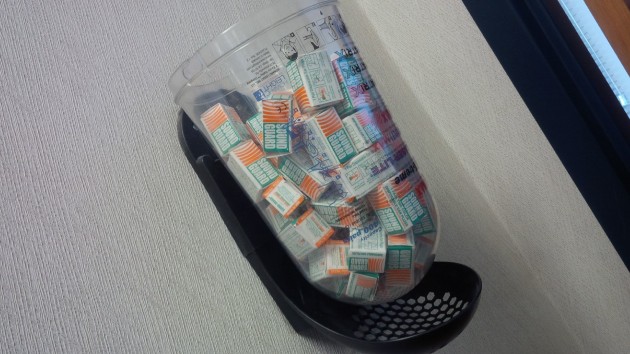
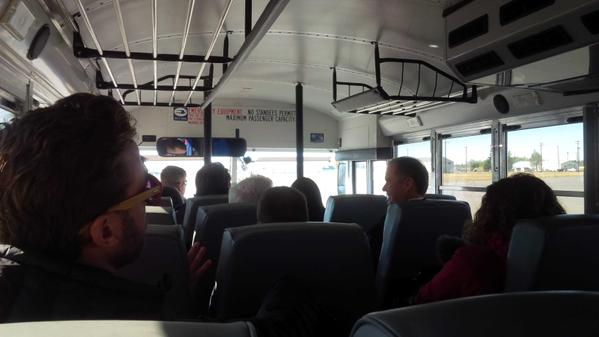




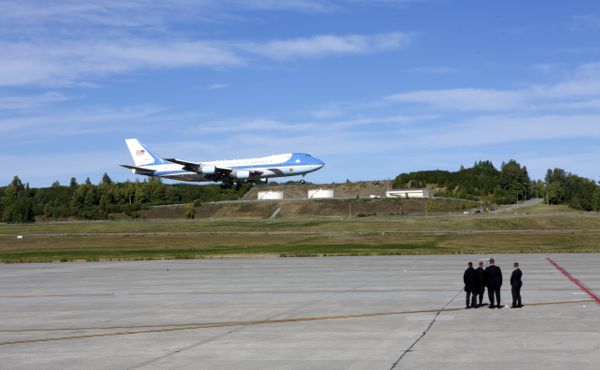
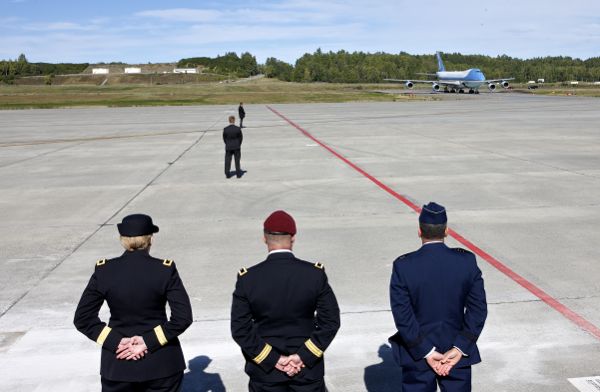




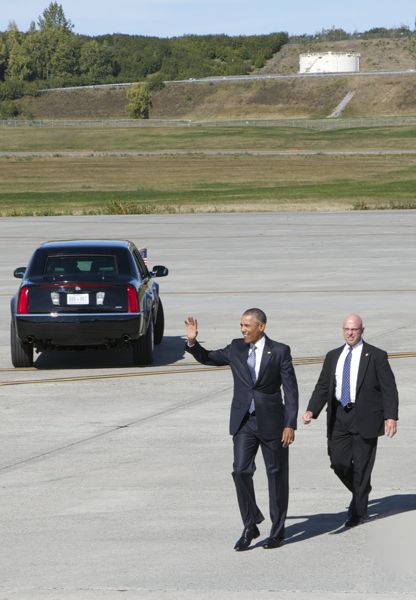





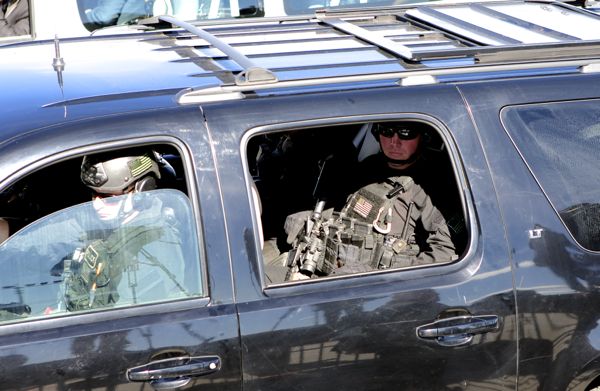
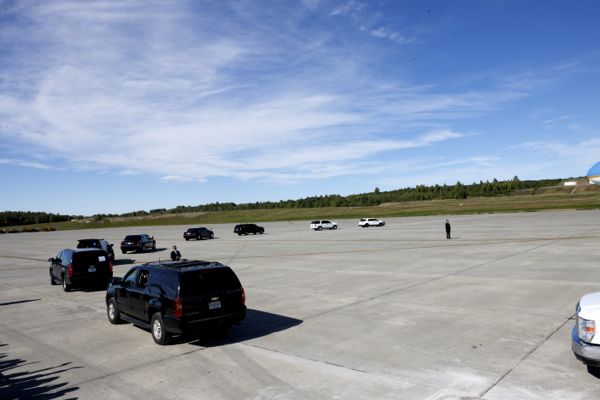






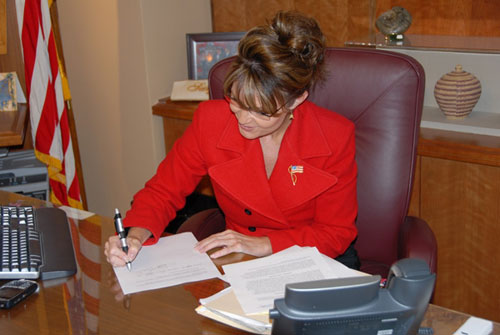


Awesome. Thanks!
[Cowboy boots, eh? What. A. Tool.]
Thanks for another terrific article. You’re OUR VIP. Here’s an interesting story about what’s going on in British Columbia: http://www.smithsonianmag.com/science-nature/rare-white-bear-key-saving-canadian-rainforest-180956330/
Jeanne, well written as usual. Unfortunately, I’m not holding my breath, given all the destruction we have caused and continue to cause in the Middle East, Europe, etc. If there is a possible pipeline for oil or gas, you are in the way of Wall Street, Big Oil and the Military Industrial CONGRESSIONAL Complex. Those groups are all in it together–Earth and humans, watch out. You’re in the way…..
Remember, OUR diplomat, Victoria “Fuck The EU” Nuland was part of THIS administration: http://www.theguardian.com/world/video/2014/feb/07/eu-us-diplomat-victoria-nuland-phonecall-leaked-video, AND
General Wesley Clark Asked About 7 Country War Plan – YouTube
…about a speech he made where he revealed pentagon plans for War with seven countries in five years. General Wesley Clark tells of how Middle East destabilization was planned as far back General Wesley Clark speaks to Democracy Now! (March 2, 2007) https://www.youtube.com/watch?v=_pGkFMho6Co
Thank you for an excellent article. Fun to read and smile in the right parts, and sober thoughts to consider in other right parts.